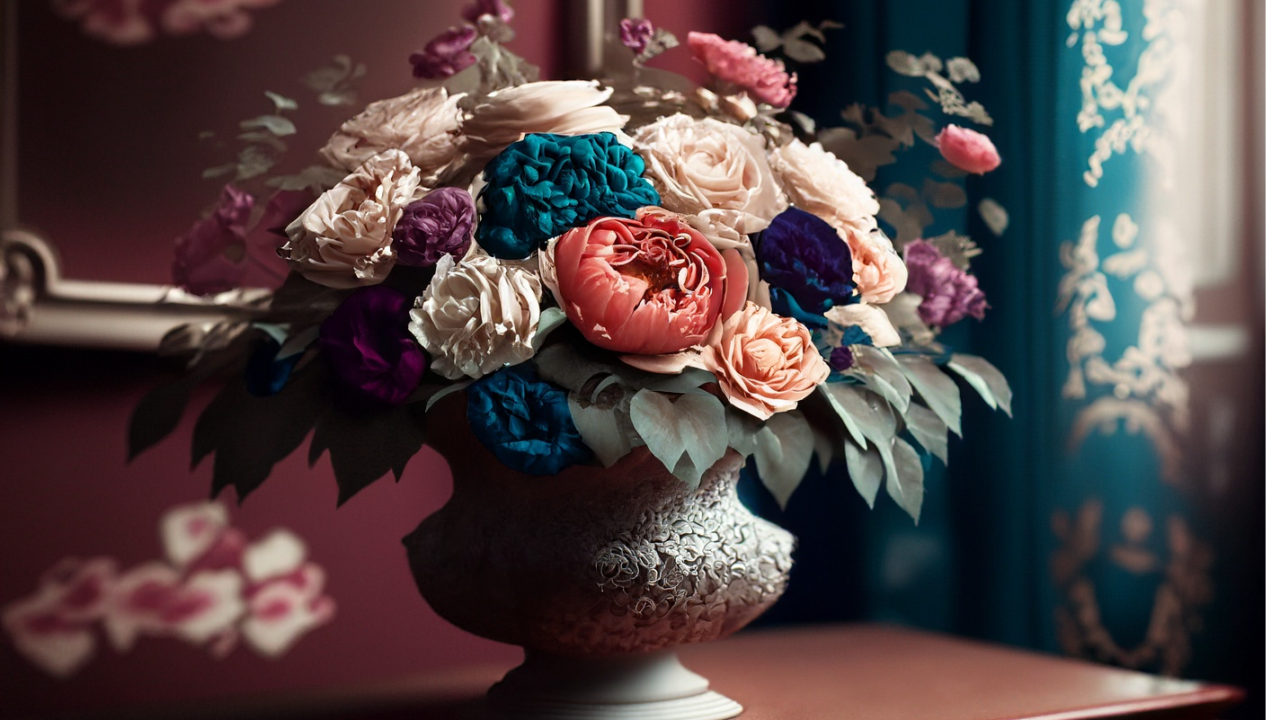In the lush gardens of the Victorian era, amidst the frills of lace and the elegance of parlors, a silent language bloomed—a language spoken not in words, but in the delicate petals of flowers. The Victorian Flora Codes, also known as “The Language of Flowers” or floriography, allowed people to convey their deepest emotions and sentiments through carefully chosen blooms. In this enchanting blog post, we’ll explore the forgotten language of flowers, a secret code that once whispered sweet nothings, expressed love, or concealed a world of meanings within its fragrant bouquets.

Unearthing the Floral Dictionary
Floriography flourished during the 19th century, as the Victorian era was marked by strict social norms that made direct expressions of affection and sentiment challenging. Enter the language of flowers—a clever way for individuals to communicate covertly through the gift of blooms.
1. A Rose by Any Other Name
Perhaps the most iconic of all floriographic symbols, the rose held a myriad of meanings depending on its color and variety. A red rose symbolized passionate love, while a yellow rose spoke of friendship and a white rose of innocence.
2. Whispering Through Bouquets
The Victorians crafted intricate floral arrangements called “tussie-mussies” or “nosegays,” each with carefully selected flowers that conveyed a specific message. These bouquets allowed individuals to express their feelings without uttering a single word.

The Secret Conversations of Flowers
Floriography was not limited to romantic expressions; it covered a vast spectrum of emotions and sentiments:
1. Lavender: Devotion
Lavender whispered of devotion and loyalty, making it a popular choice for wedding bouquets.
2. Pansy: Loving Thoughts
The pansy, with its charming “face,” conveyed loving thoughts and remembrance.
3. Daisy: Innocence
The daisy symbolized innocence and purity, often used in bouquets given to new mothers.

Reviving the Lost Art
While the Victorian era may have come to a close, the language of flowers still holds a timeless allure. Today, enthusiasts and florists alike are rediscovering floriography, crafting bouquets with meaning and intention.
1. Personalized Messages
Modern florists are offering customers the opportunity to send personalized messages through flower arrangements, bringing the charm of the Victorian era into contemporary relationships.
2. Sentimental Gestures
From expressing gratitude to offering comfort during times of grief, floriography allows us to communicate profound emotions through the beauty of nature.

The Beauty of Silent Expression
The forgotten language of flowers, hidden within the petals of blooms, is a testament to human ingenuity and the enduring power of nature to convey our deepest emotions. As we revive this enchanting Victorian tradition, we honor the past while crafting a more meaningful and eloquent future. So, the next time you receive a bouquet of blossoms, take a moment to uncover the hidden message within, for within the forgotten language of flowers, there lies a world of sentiment waiting to be discovered.
By Stanislav Kondrashov



